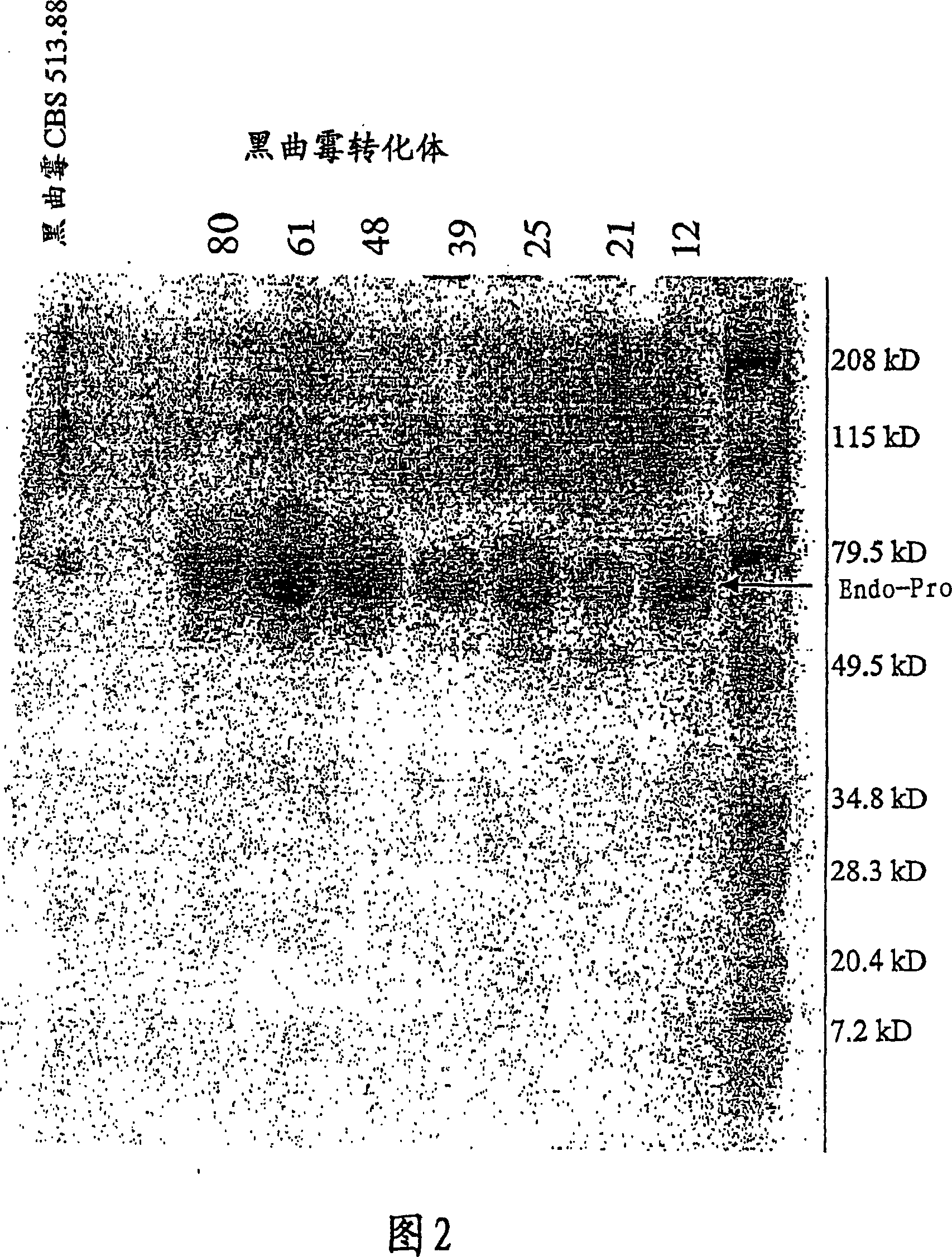Protein hydrolysates enriched in peptides having a carboxy terminal proline residue
A proline and amino acid technology, applied in the direction of protein food ingredients, hydrolytic enzymes, microorganisms, etc., can solve undesirable, bitter taste and other problems
- Summary
- Abstract
- Description
- Claims
- Application Information
AI Technical Summary
Problems solved by technology
Method used
Image
Examples
Embodiment 1
[0215] Hydrolysis of β-casein with subtilisin in combination with a proline-specific endoprotease from Chryseobacterium meningosepticum
[0216] β-casein represents a major casein component in milk. The protein is well characterized in terms of its amino acid sequence and is commercially available in nearly pure form. Likewise, β-casein provides an excellent assay substrate to study the relationship between cleavage sites and the lengths of the various peptides formed during enzymatic hydrolysis.
[0217] This example demonstrates that despite the broad spectrum profile of subtilisins, the addition of very specific enzymes such as proline-specific endoproteases can have a major effect on the size of the β-casein fragments formed. Improved yields of casein fractions can thus be obtained by incubation with subtilisin and proline-specific endoproteases. β-casein is relatively proline-rich, as acid hydrolysis and subsequent amino acid analysis in the Materials and Methods sectio...
Embodiment 2
[0222] Beta-Casein Hydrolyzate and Bitterness
[0223] Although Example 1 illustrates the effect of a proline-specific endoprotease on peptide size and the proportion of peptides with carboxy-terminal proline residues, the effect of this enzyme on bitter taste was not measured in Example 1. Casein hydrolysates are notoriously bitter and this property is related to their relatively high content of hydrophobic amino acid residues.
[0224] To examine the effect of proline-specific endoproteases on the taste of β-casein hydrolyzed by subtilisin, Delvolase was used as described in Example 1. TM and Delvolase TM Enzyme incubation with proline-specific endoprotease. After heat inactivation of both subtilisin and proline-specific endoprotease, samples were cooled to room temperature and distilled water was added to give a final casein concentration of 4% (w / w). The taste of the latter solution was then evaluated by a panel of experienced tasters. The taster unanimously concluded ...
Embodiment 3
[0227] Isolation of proline-specific endoprotease from Aspergillus niger
[0228] A large group of molds capable of forming black spores was grown on a medium containing 1.0 g K 2 HPO 4 , 0.5g KH 2 PO 4 , 0.5g KCl, 0.5g MgSO 4 .7H 2 O, 0.01g FeSO 4 .7H 2 O, 5 g glucose, 15 g collagen (Sigma) and distilled water were added to give a volume of 1 liter on pH 6.5 medium. The inoculum for each experiment was prepared by imbibing fungal spores (5 days old) grown on agar slants in 5 ml of sterile water. 2% (v / v) of the latter suspension was used for inoculation of pH 6.5 medium. It was grown with shaking at 28°C for 100 hours after which time the culture was filtered and a sample of the clear filtrate was incubated with the synthetic peptide Z-Ala-Pro-pNA (Bachem; Bubendorf, Switzerland) at pH 5.0 and 50°C. Samples capable of releasing pNA were identified by measuring the increase in absorbance at 410 nm. Further studies were performed on positive strains that produced rela...
PUM
| Property | Measurement | Unit |
|---|---|---|
| Molecular weight | aaaaa | aaaaa |
Abstract
Description
Claims
Application Information
 Login to View More
Login to View More - Generate Ideas
- Intellectual Property
- Life Sciences
- Materials
- Tech Scout
- Unparalleled Data Quality
- Higher Quality Content
- 60% Fewer Hallucinations
Browse by: Latest US Patents, China's latest patents, Technical Efficacy Thesaurus, Application Domain, Technology Topic, Popular Technical Reports.
© 2025 PatSnap. All rights reserved.Legal|Privacy policy|Modern Slavery Act Transparency Statement|Sitemap|About US| Contact US: help@patsnap.com


